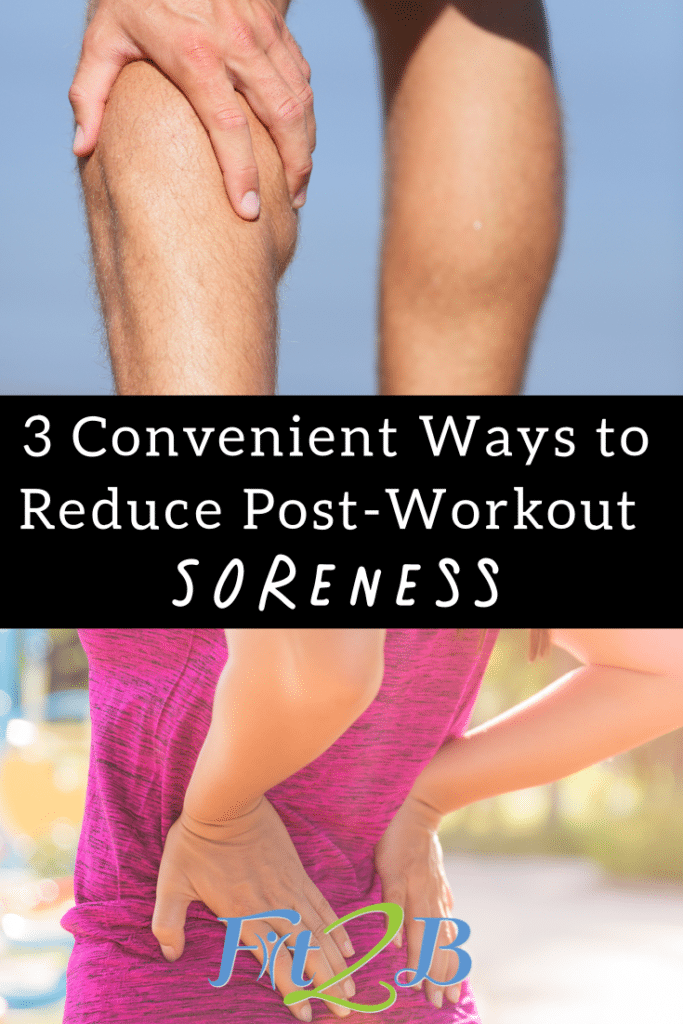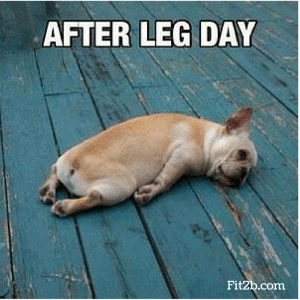Blog
3 Convenient Ways to Reduce Post-Workout Soreness
We are about strength, not soreness here at Fit2B Studio, but sometimes our more challenging workouts will leave you feeling sore, and then what? Proper nutrition to fuel your muscle’s work AND excellent alignment are the biggest keys to preventing unnecessary pain, but we’re talking about how to treat those tight muscles DURING the discomfort. So join me in welcoming guest writer Becky Wilcox…
“When you add an extra session to your workout or decide to go an extra mile with your run, you expect to feel the burn the following day. Assuming that it isn’t the pain associated with cracked bones or torn ligaments, and that it isn’t interfering with your daily routine, soreness can still make your muscles feel ill, compromise your performance, and impair your strength for days.
Whether soreness is an indication of an effective workout or not, it’s good to prevent it because apart from causing instances of pain, it can keep you away from regular training, sometimes even to the point of diminishing returns.
Other ill effects that prolonged soreness may include:
· Females who experience soreness after exercise may be at risk of injury because prolonged soreness may lead to a reduction in the elasticity of ligaments.
· Increased risk of injury, especially in relation to high force running and activities such as jumping and skipping. This is because soreness of muscles reduces recruitment patterns and the normal range of motion in joints, decreasing their ability to absorb shock efficiently.
· Decreased motivation to work out and proper performance when faced with increased physiological demand of endurance training. Delayed post exercise soreness affects performance most while training in high temperatures.
 Reducing soreness after workout
Reducing soreness after workout
There is no magic bullet for treating soreness that follows after a hard training session, but there are several measures you can take to minimize the severity of the pain, such as the following:
Massage therapy
Massage therapy is no longer limited to upscale health clubs and luxury spas. Today, it is accessible in clinics, businesses, hospitals, gyms, fitness centers, spa outlets and even airports. A research study cited by the NYTimes reveals that massage does an effective job at healing sore muscles. It helps in aiding the growth of mitochondria in muscles, and in reducing inflammation. Many women attest to the fact that massage helps in reducing pain from soreness and speeding up muscle recovery; now researchers have the evidence to go along with the testimonies.
What massage does is set off a serious of molecular events in muscle fibers that aid in reversing the discomfort that comes after exercise. The therapy also dampens the activity if inflammatory cytokines (proteins), which are known to cause pain and inflammation. So by reducing inflammation, or the pro-inflammatory proteins, to be specific, – the pain is reduced.
Workout compression gear
Workout gear offering compression have been medically used in treating aching, heavy legs, swelling, spider veins and injured knees. But did you know that compression garments can also be used to reduce delayed onset muscle soreness? Outdoors.org says that several studies have found that wearing compression garments after exercise can reduce muscle soreness as well as accelerate recovery. And other benefits of wearing compression gear include increased warmth to the sore muscles and the presence of moisture-wicking layer beside the skin.
Women’s compression tights and other forms of compression clothing and gear offers the benefits of increased oxygen delivery to muscle joints, which reduces soreness and stiffness. The availability of greater oxygen reverts the lactate state of muscles (responsible for soreness), thereby allowing for aerobic metabolism buildup and energy for the muscles to recover from a strenuous exercise session.
Yoga or Stretching
Muscles tend to tighten up when they are in recovery mode, and this makes them exacerbate feelings of soreness. Gentle stretching of the area where the soreness resides can diffuse the pain and relieve that tight feeling. Yoga can stretch the muscles to increase their mobility and flexibility while unknotting the pressure points that result in soreness.
There are several yoga poses that can be performed to ease muscle soreness. Fit2B Studio {the lovely site you’re on right now} has several stretching routines built into the Relaxation Pathway and the Intro to Yoga pathway. Remember to stretch yourself to the extent where you feel comfortable, as over-stretching may result in more soreness.”
Note from Beth, founder of Fit2B: Thanks, Becky! Great info! Magnesium really helps me fight muscle soreness, and I’ve used this magnesium lotion and also taken it orally and via epsom salt baths when I feel sore or crampy. If I’m careful about eating a balance of protein and carbs about an hour before strenuous exercise, I’m seldom sore. Even after doing Portland to Coast this year, which included 3 legs totalling 19+ miles in less than 27 hours, and getting a personal record (PR) I wasn’t sore at all! As a personal trainer, I simply do not believe you need to get sore to accomplish your goals, and any trainer who says you need to hurt to get stronger isn’t fully educated. We make stronger cores every day minus the pain. Try us! Click HERE for information on accessing our workouts.
Becky Wilcox is a mother and entrepreneur. Originally from the east, she now lives on the west coast. Becky enjoys writing about health, fitness, and anything else that sparks her interest! Contact her at [email protected]



This came at a much needed time right after my first official 5k run! Thanks! Going to lookup compression stuff now! 🙂